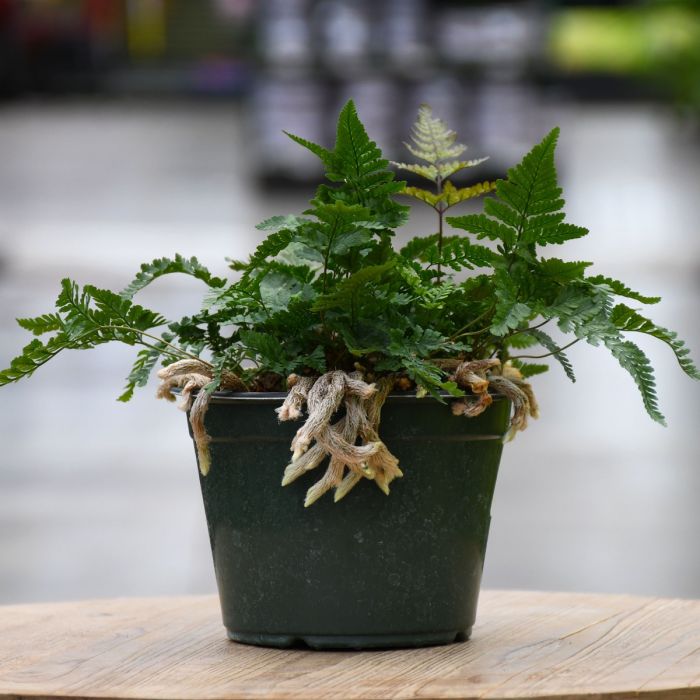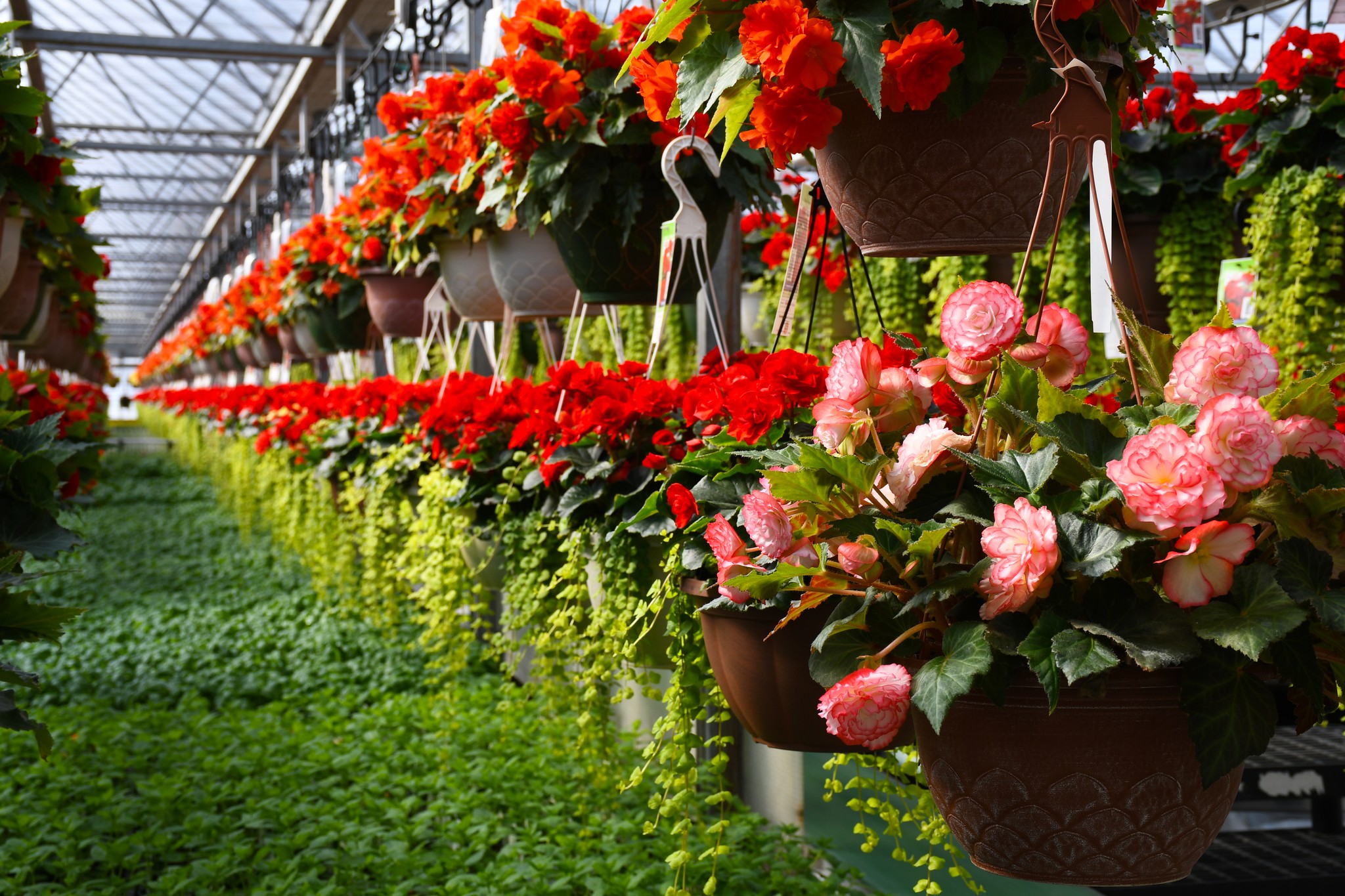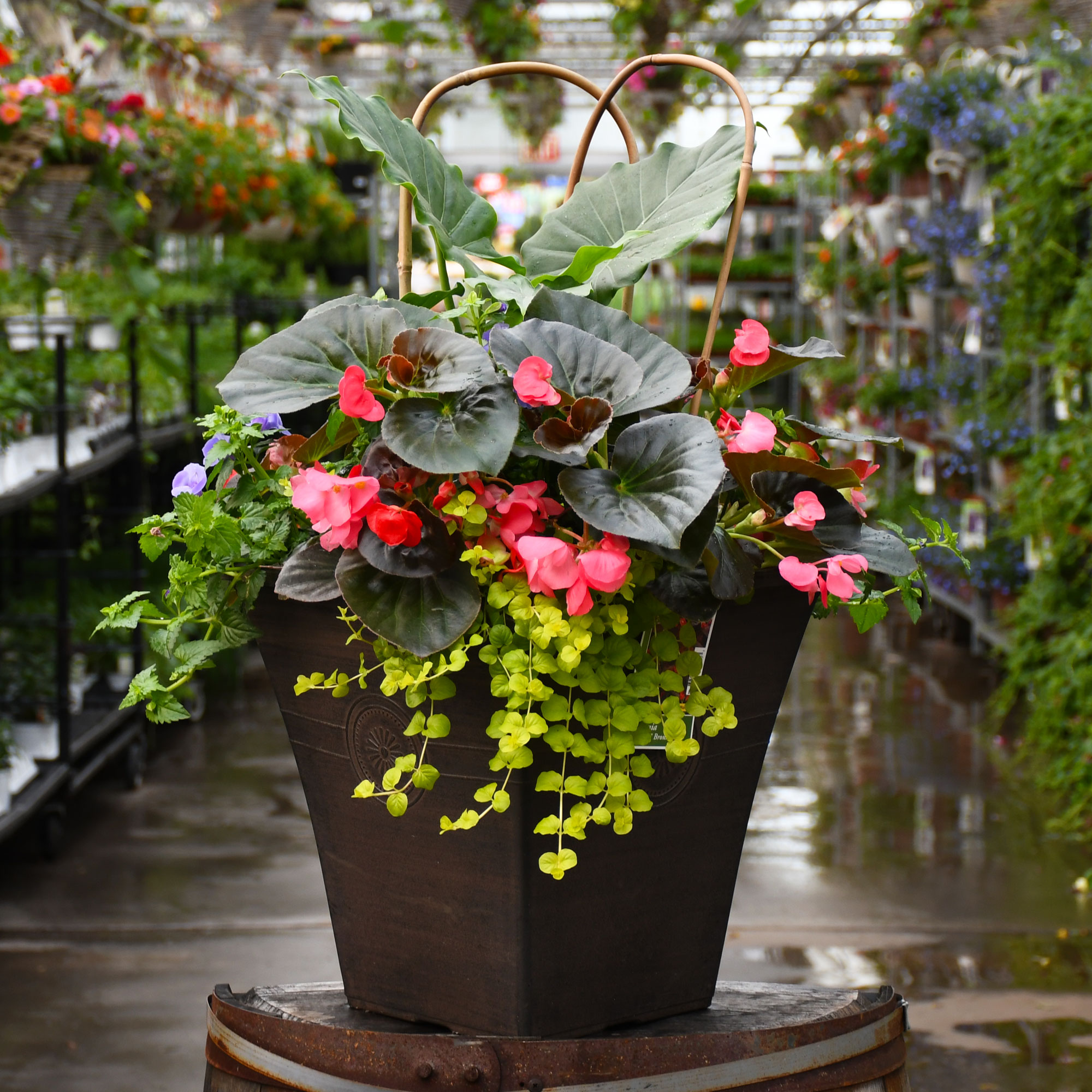Humata Tyermanii, White Rabbit's Foot Fern



- Sun Preference
- Part-Sun, No-Sun
Description
A charming fern that produces soft, silvery above ground rhizomes that cascade over the sides of its pot; soft, lacy, dark green fronds rise up and add great color and texture to any space. Provide bright, indirect light, keep the soil consistently moist but not soggy.
Direct from the Grower
When you see the Gerten Grown logo on our annuals, you know you're getting a fresh plant directly from our greenhouse. We've been perfecting our growing process for over four generations and pride ourselves on providing local quality and freshness to our customers. Better pricing on better quality plant material, that's Gerten Grown.
Details
White Rabbit's Foot Fern's attractive glossy ferny bipinnately compound leaves remain dark green in color throughout the year on a plant with an arching habit of growth.
This is an herbaceous evergreen houseplant with a shapely form and gracefully arching foliage. Its extremely fine and delicate texture is quite ornamental and should be used to full effect. This plant may benefit from an occasional pruning to look its best.
When grown indoors, White Rabbit's Foot Fern can be expected to grow to be about 12 inches tall at maturity, with a spread of 18 inches. It grows at a medium rate, and under ideal conditions can be expected to live for approximately 10 years. This houseplant performs well in both bright or indirect sunlight and strong artificial light, and can therefore be situated in almost any well-lit room or location. It does best in average to evenly moist soil, but will not tolerate standing water. The surface of the soil shouldn't be allowed to dry out completely, and so you should expect to water this plant once and possibly even twice each week. Be aware that your particular watering schedule may vary depending on its location in the room, the pot size, plant size and other conditions; if in doubt, ask one of our experts in the store for advice. It is not particular as to soil pH, but grows best in rich soil. Contact the store for specific recommendations on pre-mixed potting soil for this plant.
There are many factors that will affect the ultimate height, spread and overall performance of a plant when grown indoors; among them, the size of the pot it's growing in, the amount of light it receives, watering frequency, the pruning regimen and repotting schedule. Use the information described here as a guideline only; individual performance can and will vary. Please contact the store to speak with one of our experts if you are interested in further details concerning recommendations on pot size, watering, pruning, repotting, etc.
-- THIS IS A HOUSEPLANT AND IS NOT MEANT TO SURVIVE THE WINTER OUTDOORS IN OUR CLIMATE --
More Information
| Common Family Name | Fern |
|---|---|
| Sun Preference | Part-Sun, No-Sun |
| Plant Life Cycle | Annual |
| Mature Height (Range) | 7-12" |
| Mature Spread (Range) | 12" - 24" |


